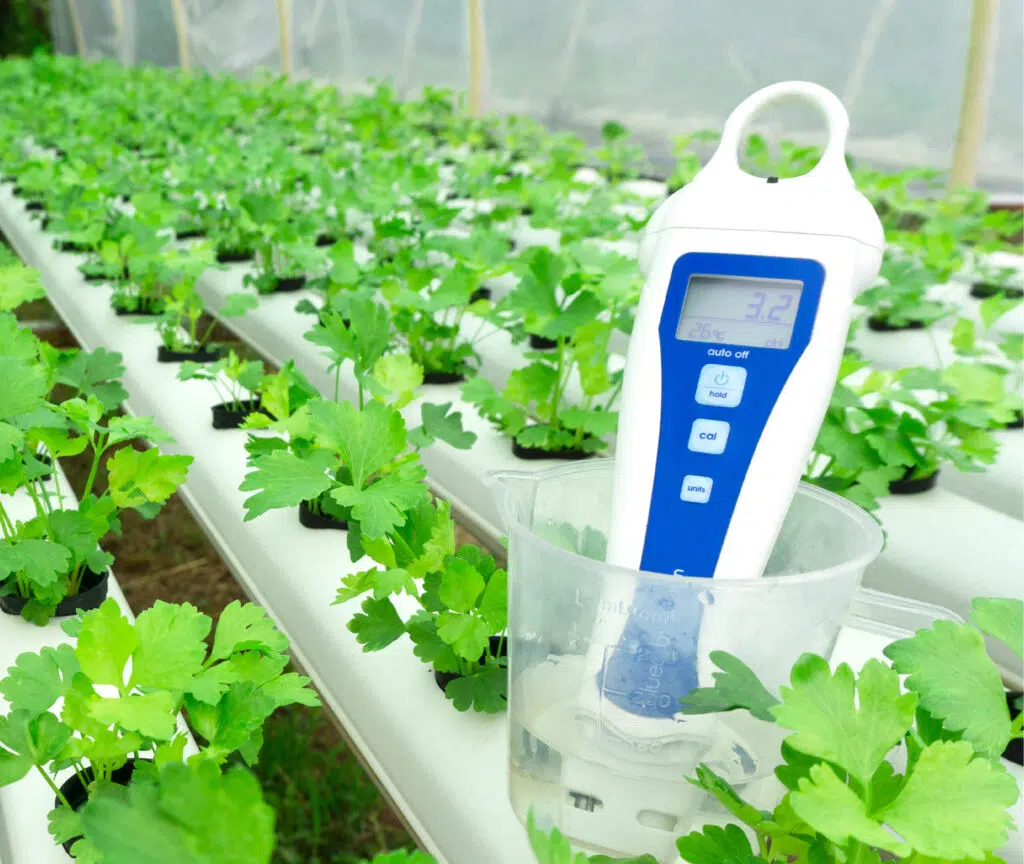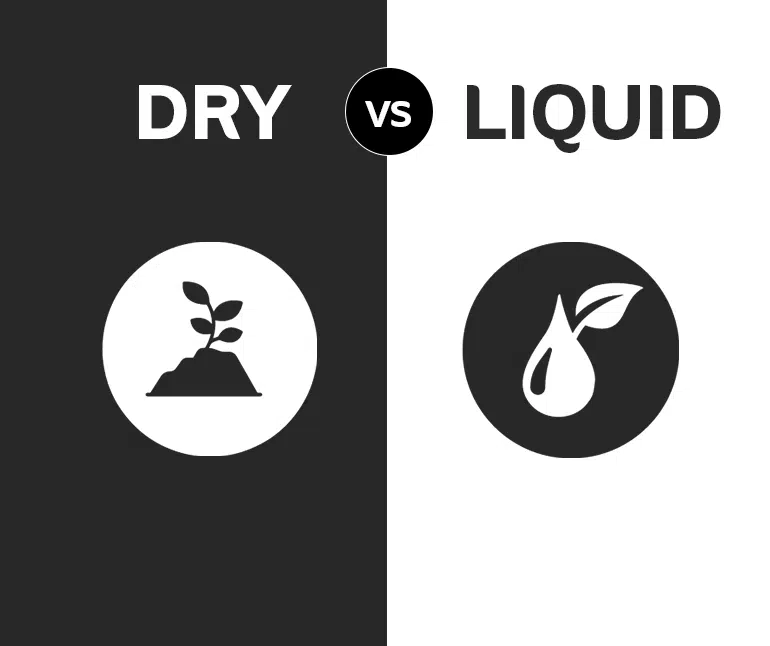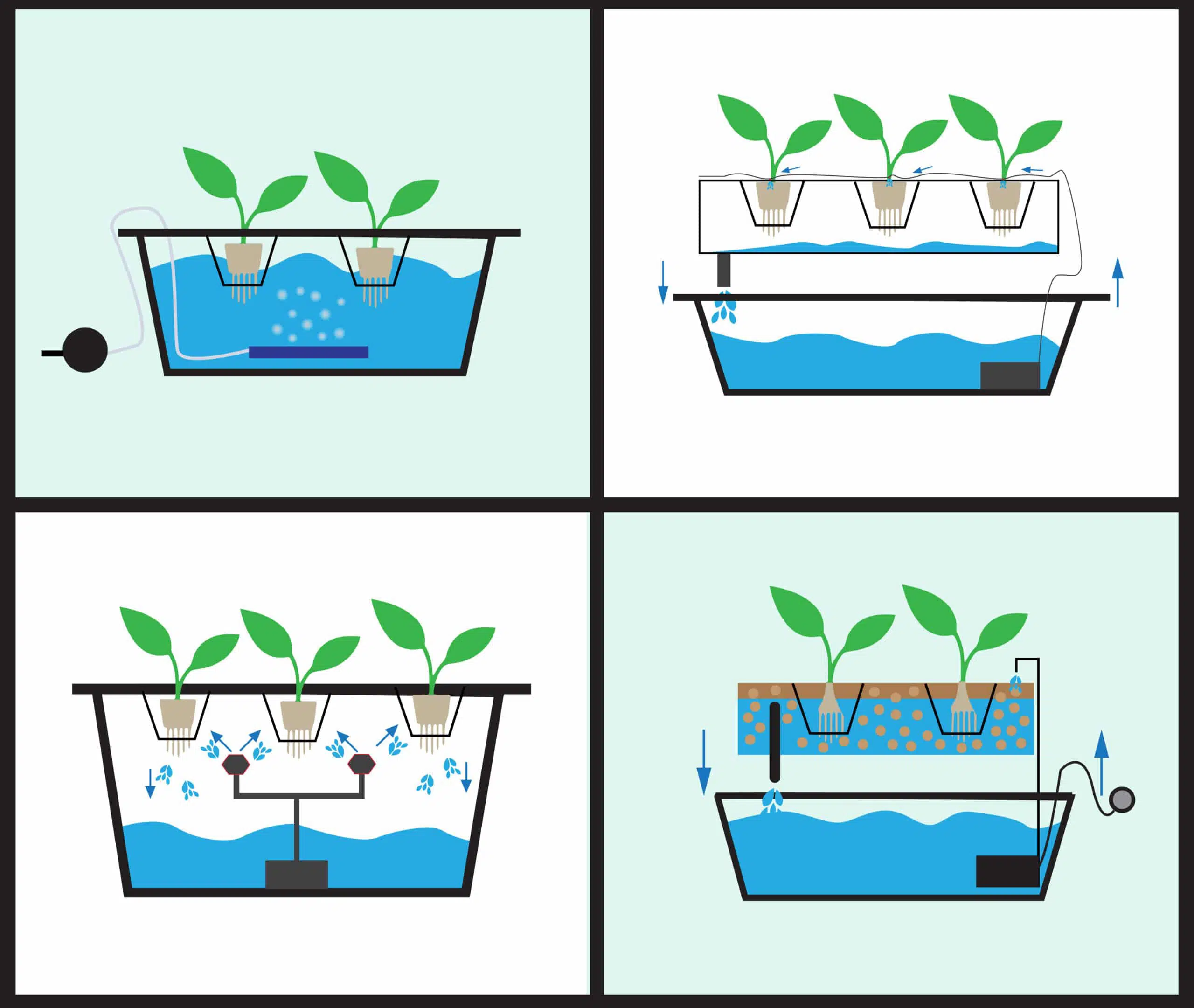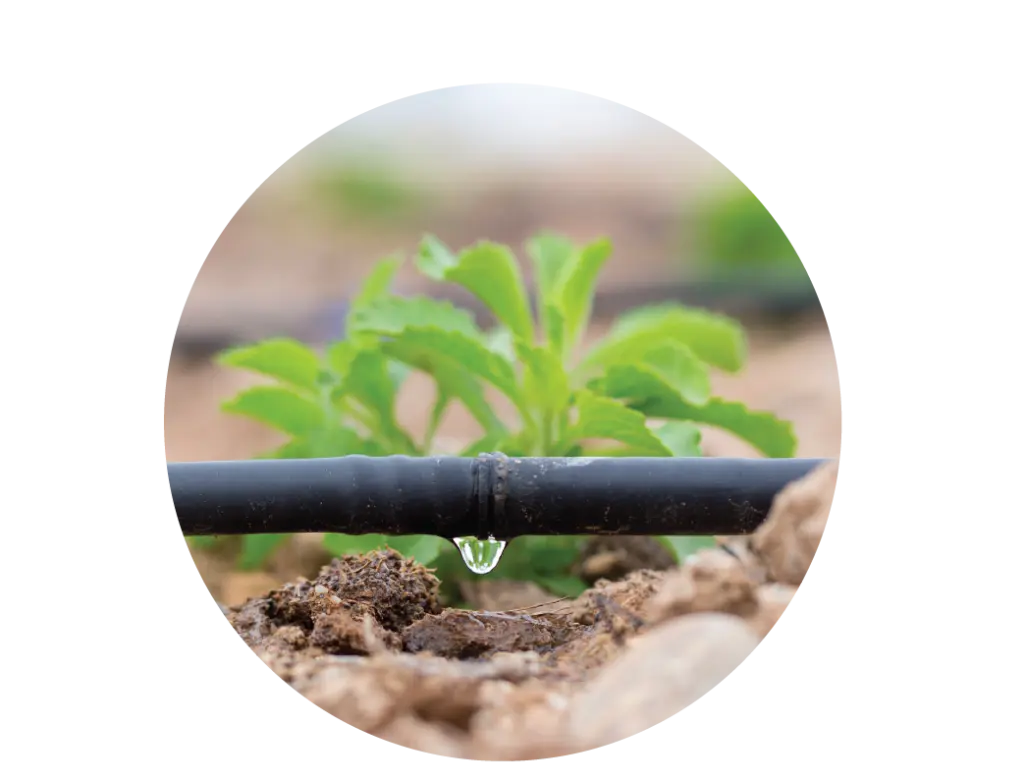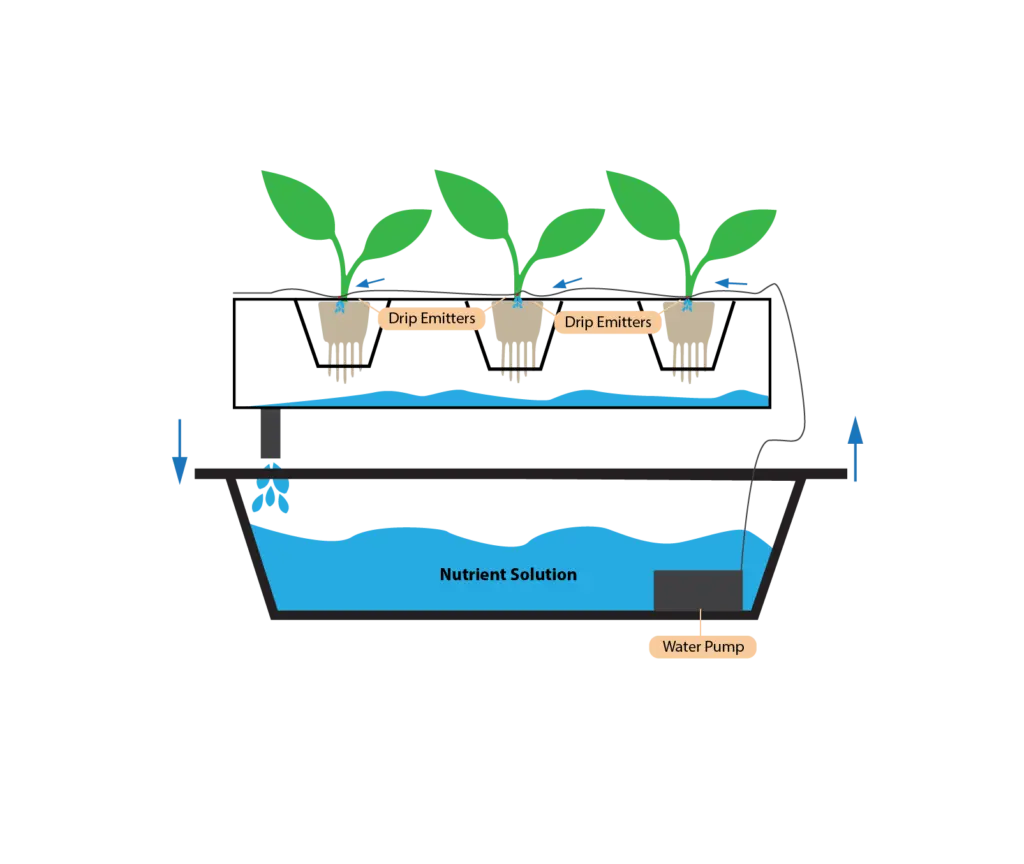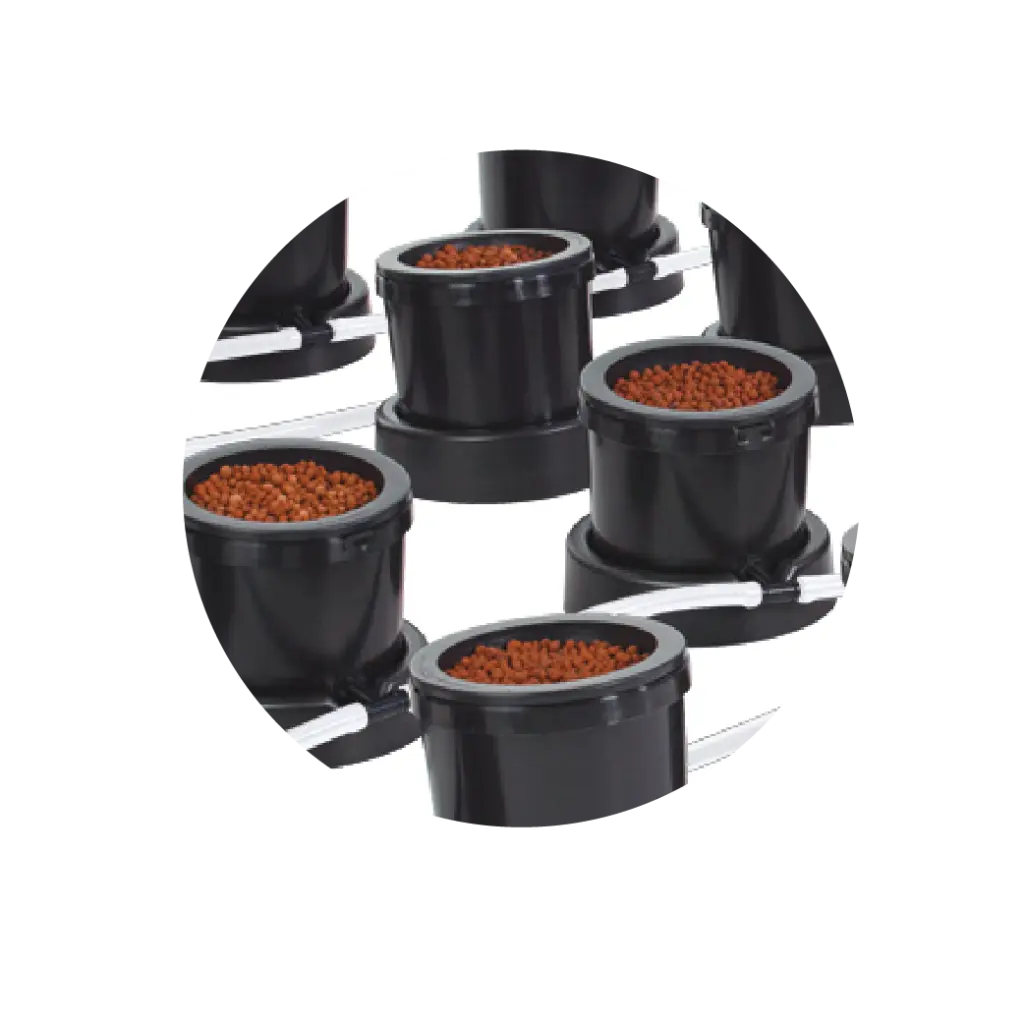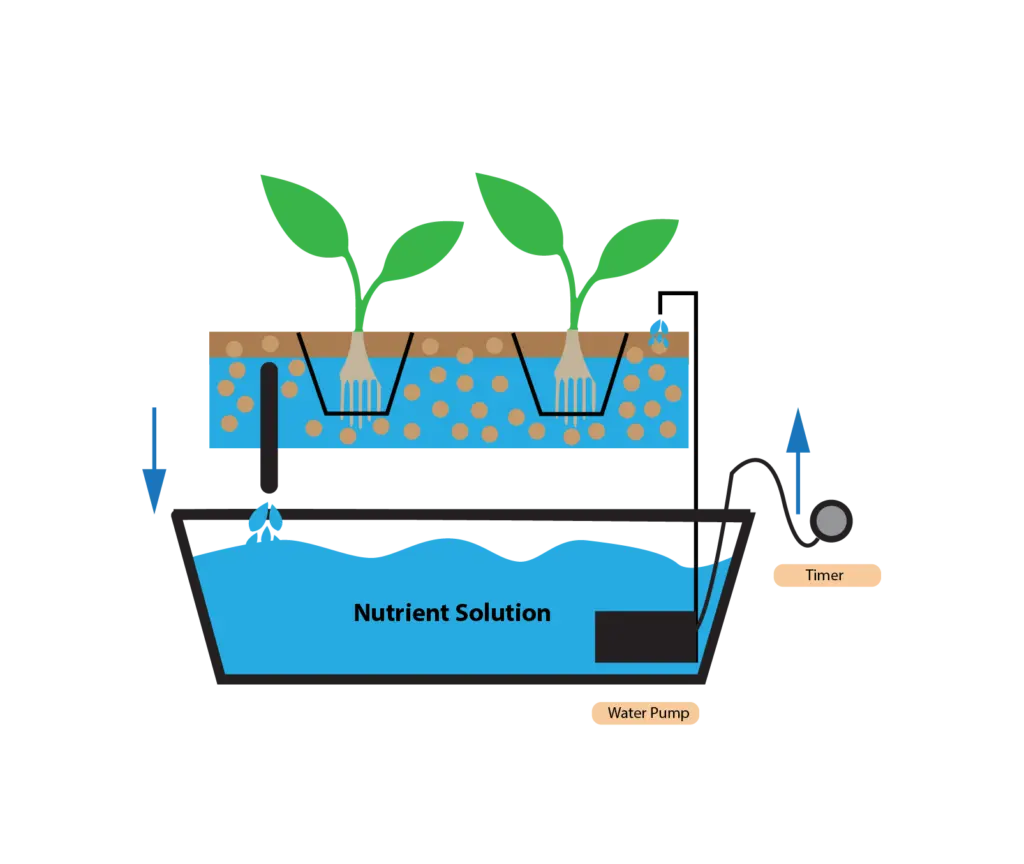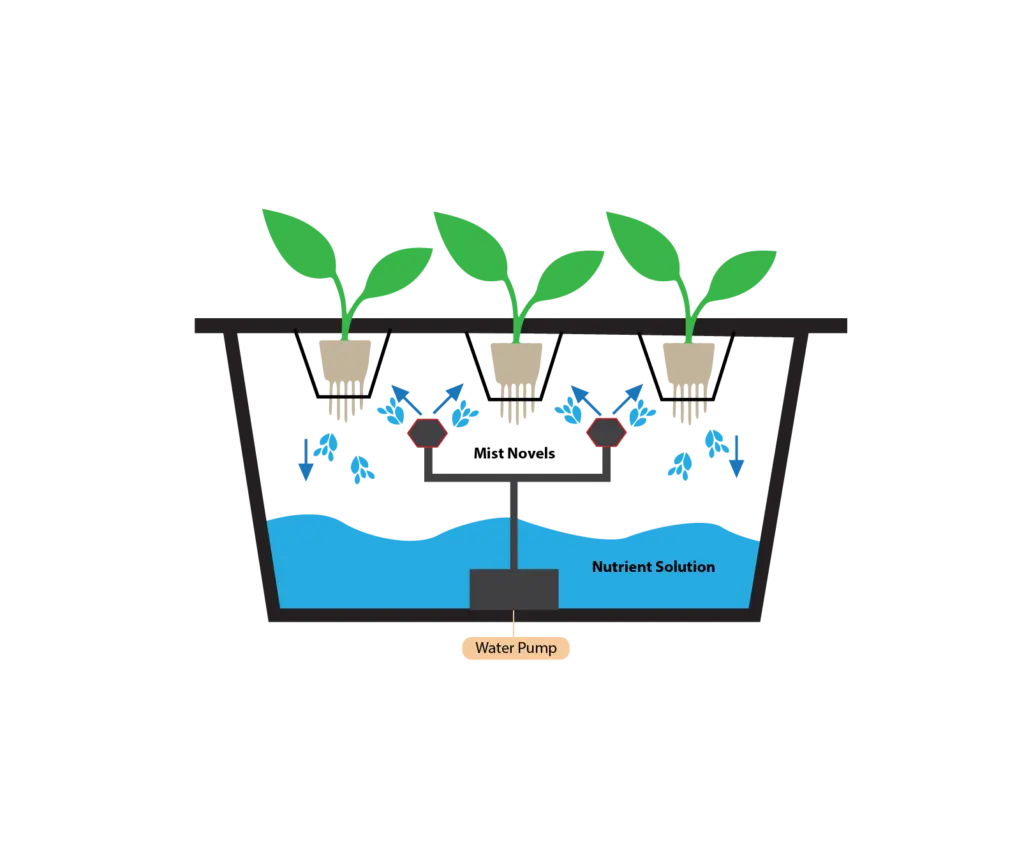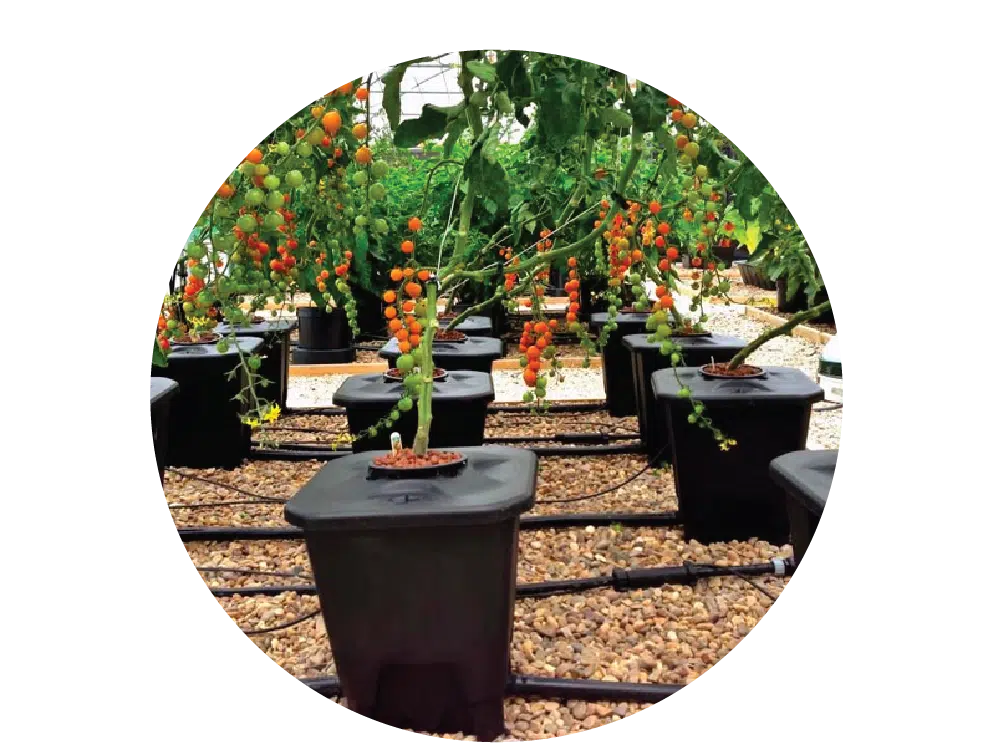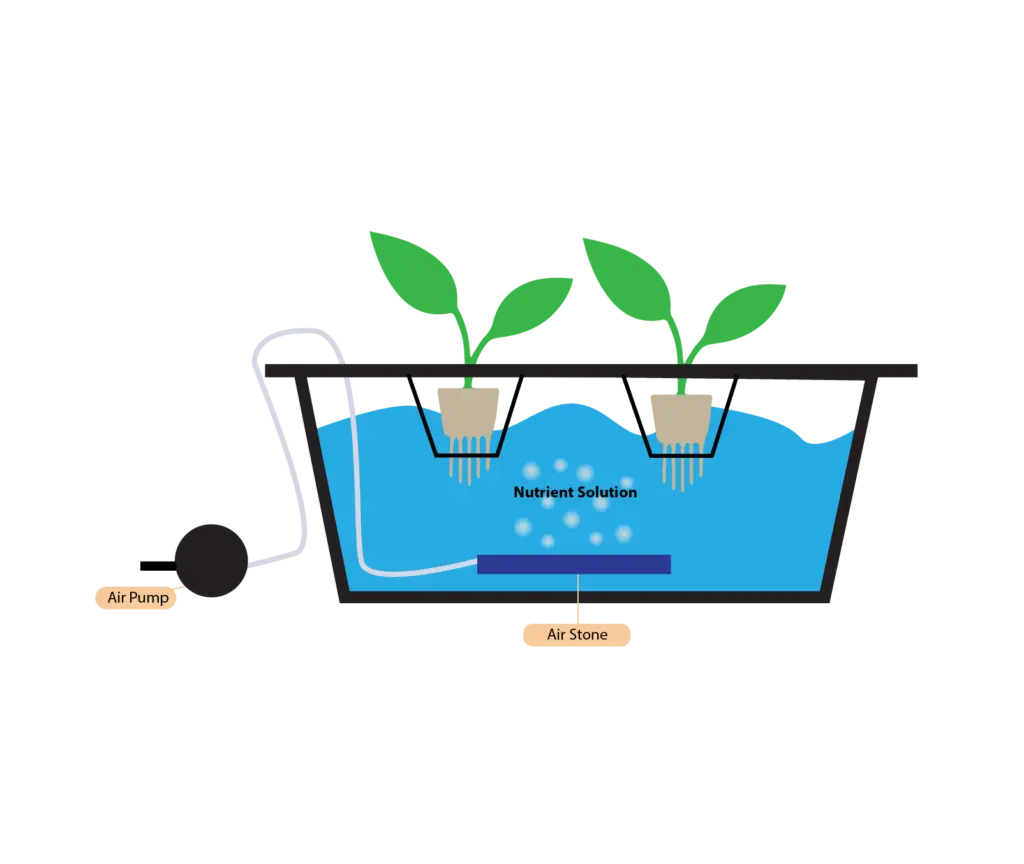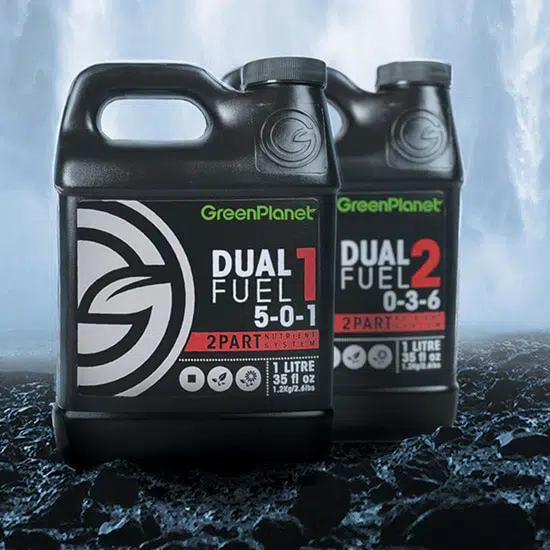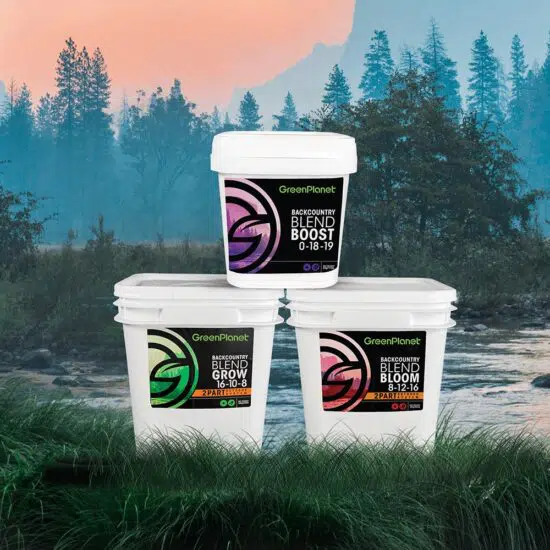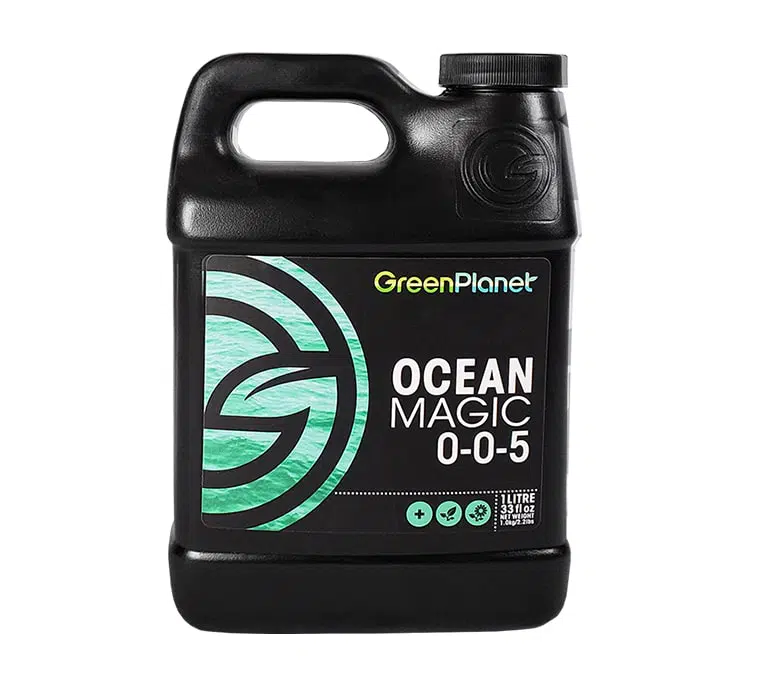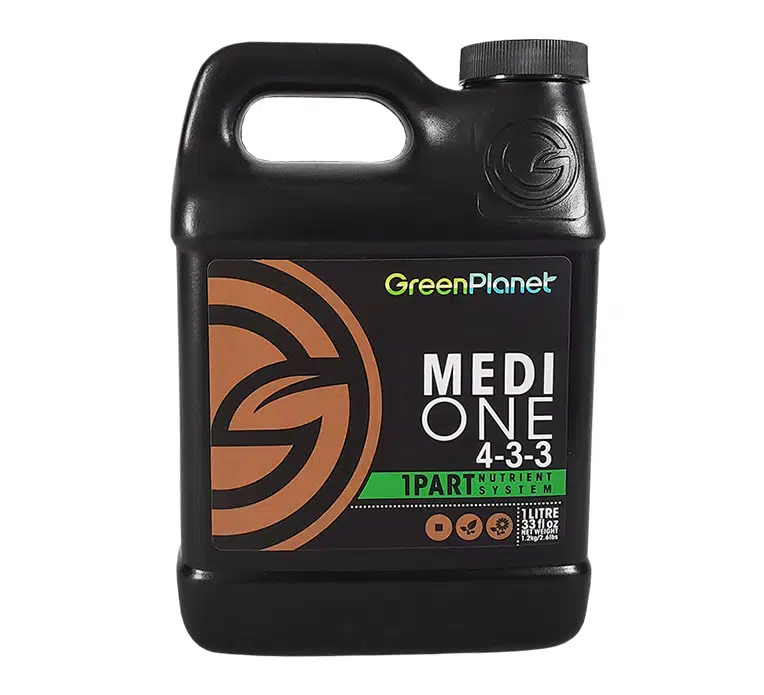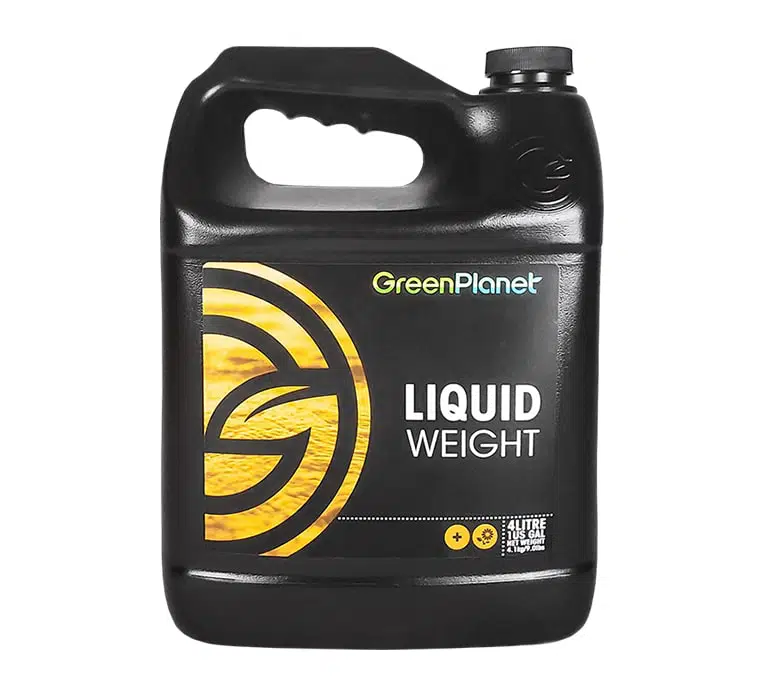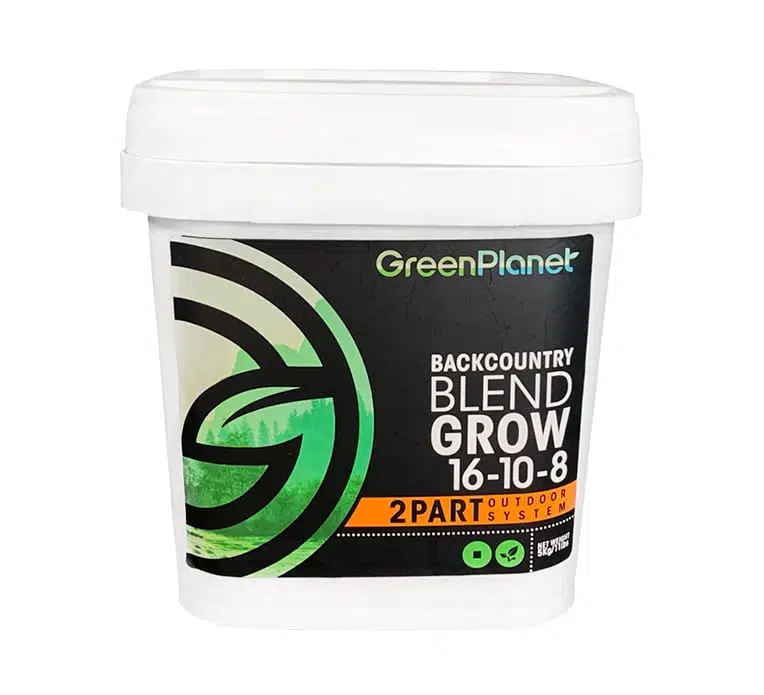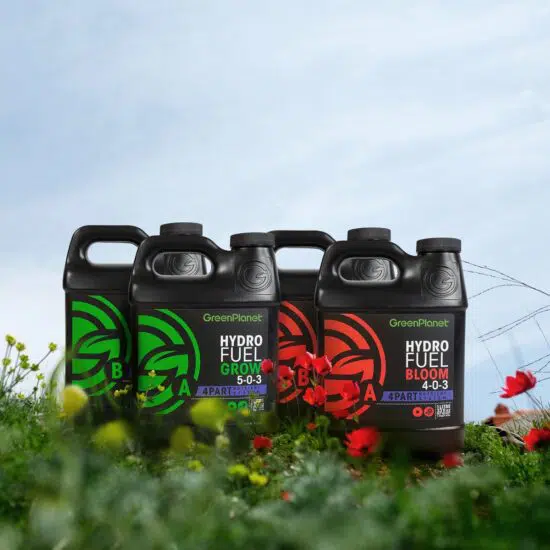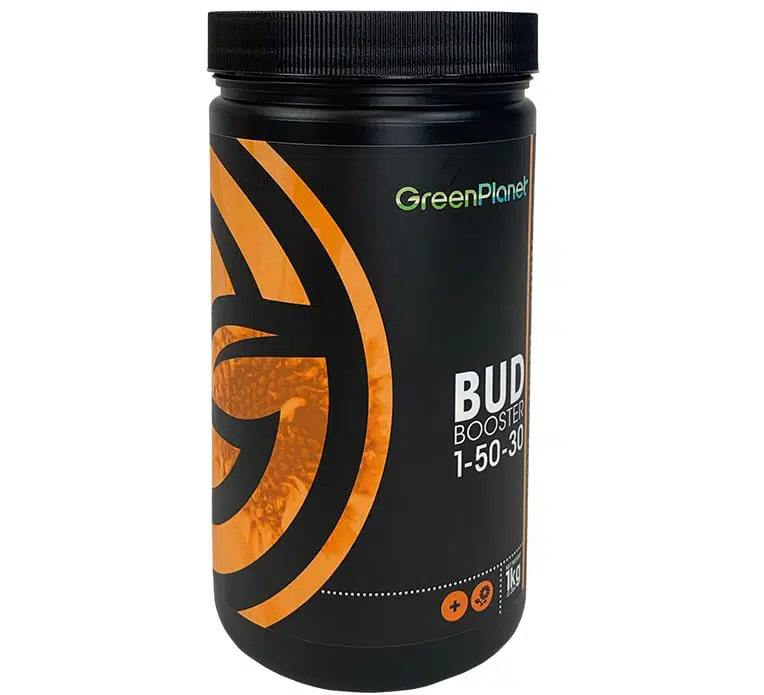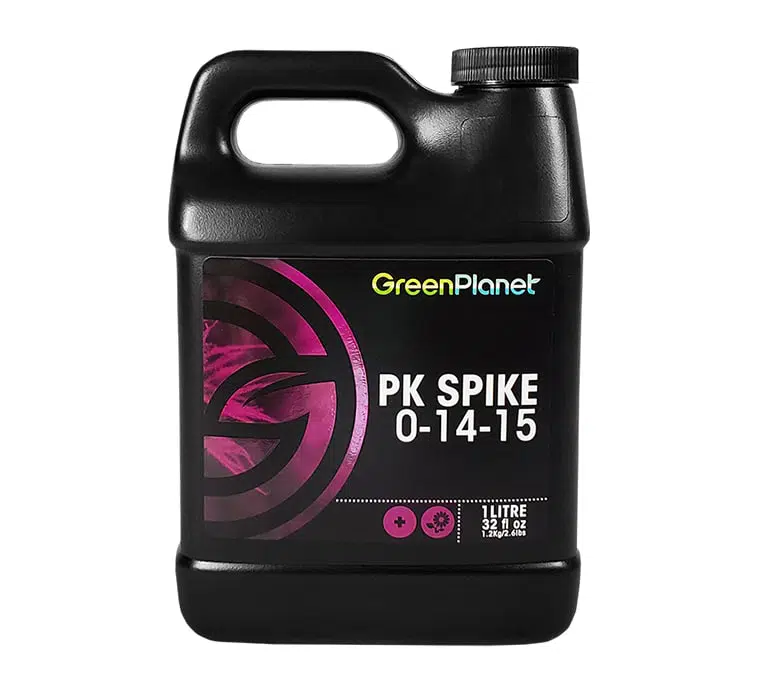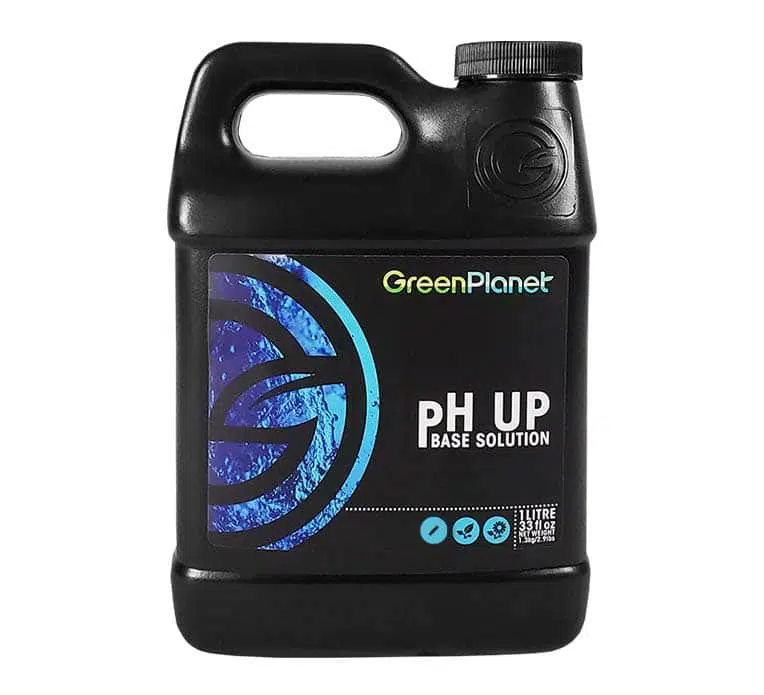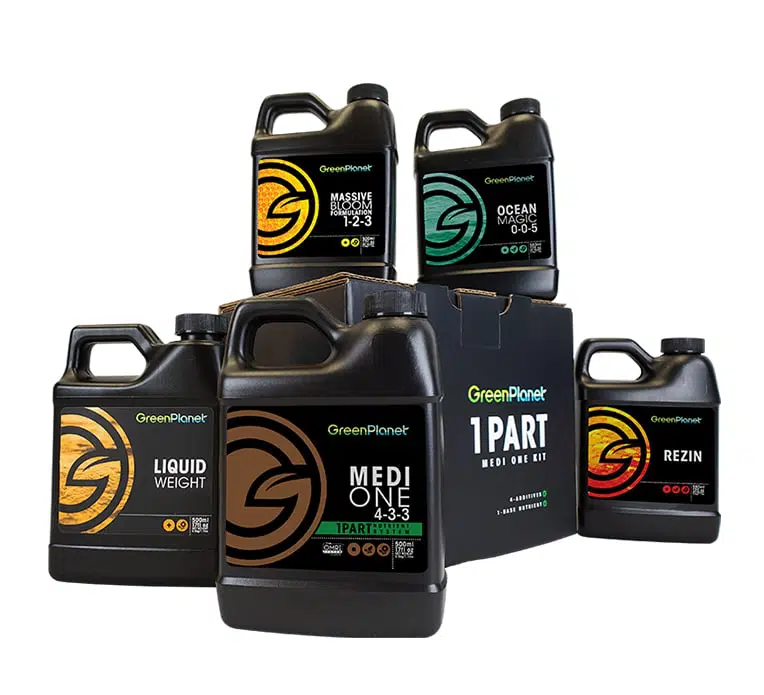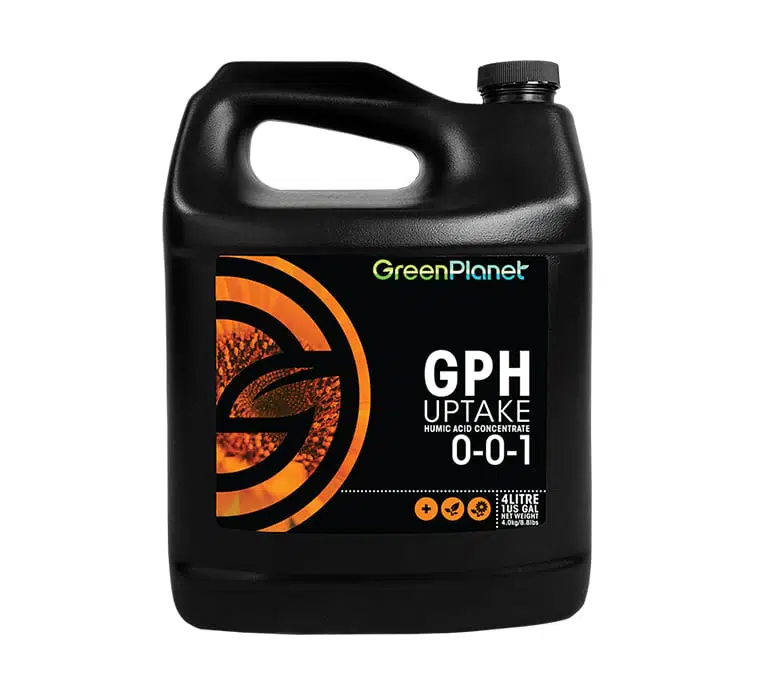Understanding the Feed Program: Dual Fuel
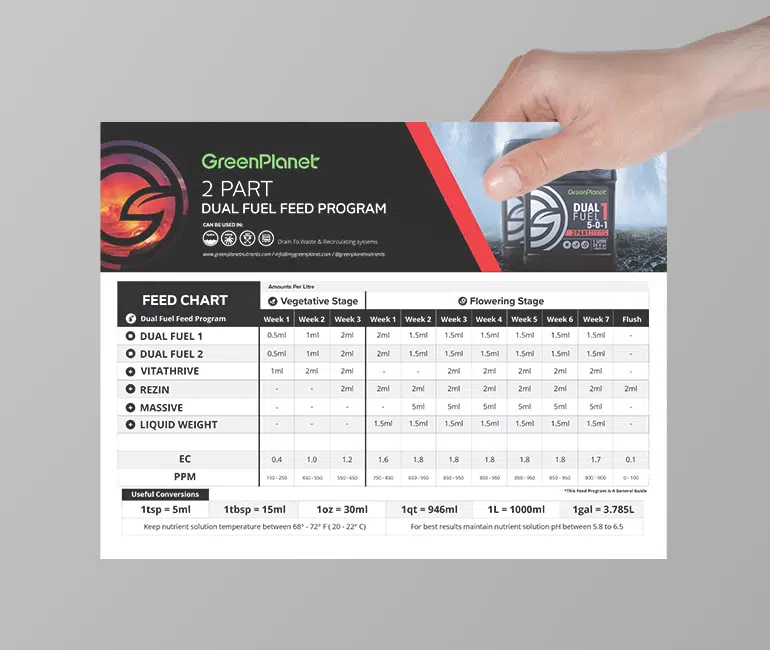
Meet GreenPlanet Nutrient’s Dual Fuel feed program – the 2-part nutrient system which emphasizes simplicity, reliability and results in the garden. Built for beginners, experts, hobbyists, and commercial growers, the Dual Fuel feeding system makes no apologies for being the easiest and most economical fertilizer on the market. Testing has shown that using Dual Fuel alone would reasonable ensure a successful harvest; however, by combining GreenPlanet’s aggressive 2-part formula with other additives like Vitathrive, Massive Bloom Formulation, Rezin, and Liquid Weight, a confident outcome is not only probably, but guaranteed. For tips on getting the most out of the Dual Fuel feed program, follow the passages below.
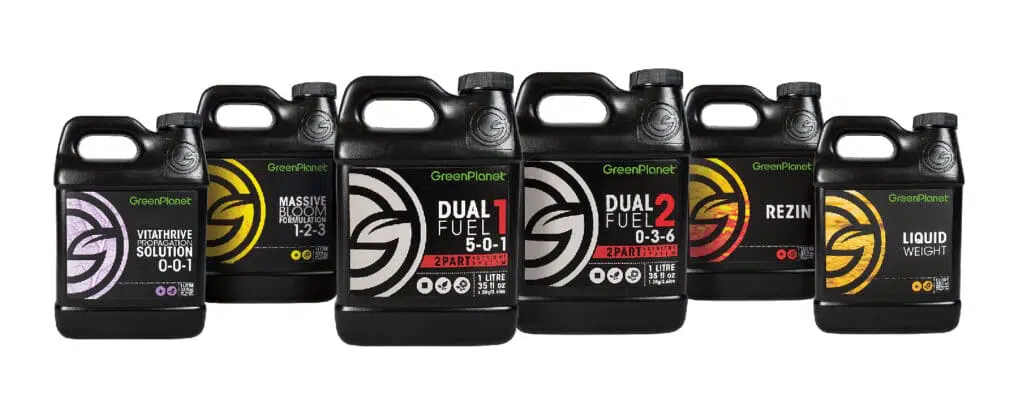
What is a Feed Program?
A feed program is a schedule of plant nutrition that can be mapped in terms of fertilizer dosage, ratio, supplementation and use overtime. Usually containing several bottles, a complete feeding program should contain supplements including a base nutrient fertilizer, a vitamin supplement, a bloom booster, a source of carbohydrates and a trichome enhancer. By combining the inputs in a feeding program, prompted with other factors that produce a confident yield, growers can expect their garden to produce the most quality-driven harvest possible. To browse a complete list of feed programs available at GreenPlanet Nutrients, click here.
The 2 Part Dual Fuel Feed Program
The Dual Fuel program was designed for growers who want to get the most out of their garden. As the largest and most highly variable input in the garden, fertilizer is something that is constantly being purchased, tinkered with, and improved upon. However, with GreenPlanet’s Dual Fuel program, the tinkering can stop and the rewards can begin. Possibly the easiest and most economical way to garden, the Dual Fuel program is one that can be mastered by even the most inexperienced grower.
Boasting an aggressive NPK ratio, high concentration rates, and a stable pH range, the Dual Fuel program is unmatched by competitors in terms of content, value and reliability. Dual Fuel is the perfect choice for growers who want to produce a clean harvest, free of headaches, mishaps and challenges. However, before committing your garden to GreenPlanet’s 2-part program, consult a description of each supplement included in the kit below:
Dual Fuel 1: Base Nutrient
Dual Fuel 1 is the nitrogen (N) heavy component of GreenPlanet’s 2-part system. Loaded with other important micronutrients like calcium, copper, iron and zinc, Dual Fuel 1 will be your plant’s centre of essential elements that promote green growth, broad leaves and manage nutrient deficiencies. Furthermore, after mixing Dual Fuel 1 & 2 together in the right ratios, the pH of your nutrient solution will adjust to a range of 6.0 – 6.3.
Dual Fuel 2: Base Nutrient
Unlike Dual Fuel 1, Dual Fuel 2 compliments the feeding program by being phosphorus (P) and potassium (K) heavy. Not only does the other half of the 2-part program supply plants with a powerful kick of (P) and (K), but it also contains important elements like magnesium and sulphur. Arguably the simplest and most reliable formula on the market, Dual Fuel 1 & 2 are recommended to be used in a 1:1 ratio throughout a plant’s lifecycle.
Vitathrive Propagation Solution: Additive Nutrient
Vitathrive is GreenPlanet’s specially formulated vitamin supplement. Use Vitathrive aggressively throughout the vegetative stage, on transplant day, and during any period of stress to increase root growth, reduce internal stress and strengthen any plant’s immune response. The main supplementary component of Vitathrive, Thiamine or vitamin B1, has been shown to be a major inhibitor of plant resilience and helps protect your crop from stressors like pests, disease, high temperatures and drought. (Subki et al, 2018, p. 37).
Massive Bloom Formulation: Additive Nutrient
Massive Bloom Formulation is GreenPlanet’s premier flowering additive, formulated with all of the necessary macro and micro-elements required to achieve an increase in flower size. As well as providing several additional beneficial properties, such as L-amino acids and a source of carbohydrates, Massive is the perfect blooming supplement to pair with the aggressive elements in the Dual Fuel program.
Rezin: Additive Nutrient
Rezin is GreenPlanet’s flowering additive formulated to enhance the natural processes within flowering plants that produce flavour and aroma. With no PPM, Rezin can be used with any base nutrient program until harvest to produce large, sugar-coated flowers. Now known for enhancing the “entourage effect” (Russo, 2019, para. 17), Rezin is one proprietary supplement that is a must-have for any quality-driven garden.
Entourage Effect: The theory that the synergistic effect of THC, flavonoids, cannabinoids and terpenes all contribute to the overall “experience” of cannabis consumption.
Liquid Weight: Additive Nutrient
Liquid Weight is a supplement blend of simple carbohydrates that support beneficial microbial life in the root zone. This leads to an increase in the absorption of essential nutrients that help develop impressive aromatic flowers and fruits. Plants spend an amazing amount of energy-releasing sugars like cellulose into the root-zone; so, by supplementing your plant’s expenditures with additional carbs, you can be sure the beneficial microbes in your soil will be plentifully fed, which in turn will support the cultivation and growth of your living medium.
Using the Feed Program
Like a recipe, the Dual Fuel feeding program has the best results when the formula is followed. As explained above, a feeding program is a schedule of plant nutrition that can be mapped in terms of fertilizer dosage, ratio, supplementation and use overtime. Throughout the weeks of vegetative and flowering growth, the Dual Fuel feeding program will guide the grower through different stages of a plant’s life, and offer general feeding ratios, doses and helpfully supplementation tips overtime. All the measurements of plant food on GreenPlanet’s feeding programs are described in millilitres of fertilizers per litre of water.
Features and Considerations
At a glance, you’ll notice a few distinguishing features about the Dual Fuel feeding program: first, only certain products and supplements are recommended for use in specific stages of plant growth. For example, the feeding program is split into two stages: vegetative and flowering growth. In these different stages, only certain supplements are recommended for use; for instance, you’ll notice that products that inhibit certain outcomes are only used in specific weeks of the growing cycle. Vitathrive, for example, is only recommended for use during the vegetative stage, and flowering weeks 3 – 7, taking into account that the plant’s internodal stretching may be enhanced by supplementing increased amounts of vitamin B1. In short, with all the product testing that has gone into formulating the Dual Fuel feed program, the best thing you can do for your plants is to follow the prescribed method of use.
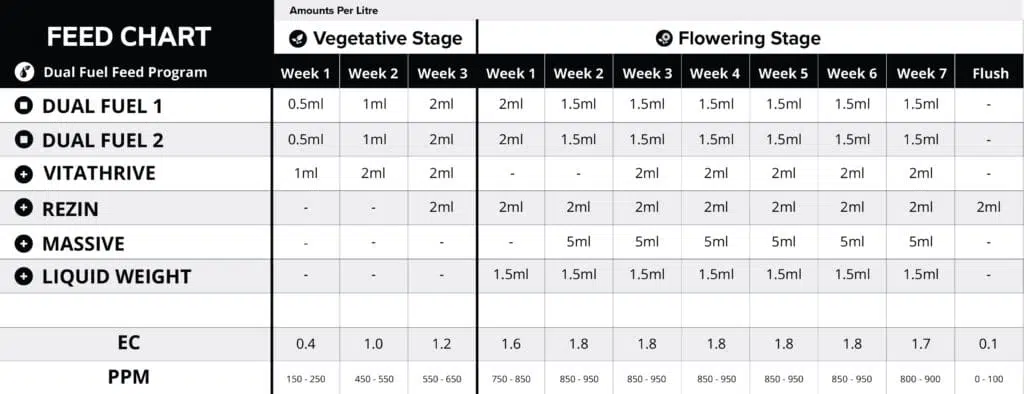
Another aspect of the feeding chart to examine is the rise and gradual plateau of the recommended Parts Per Million (PPM) of your nutrient solution. PPM is a unit of measurement which describes the concentration of a solution; in this case, since we are examining fertilizer, PPM can be seen as a measurement that determines the strength and concentration of dissolved elements within a nutrient solution. While following the Dual Fuel feed program, you’ll notice that the PPM of you’re nutrient solution will gradually increase as you move into the flowering stage, finally plateauing in weeks 2 – 6, followed by a gradual decrease in strength as you move towards the final weeks of flush. These general measurements are based on the assumption that as time progresses, your plants will become larger, and therefore be able to digest a more concentrated nutrient solution.

Want to get your plants started with the Dual Fuel feed program? Shop below!
For all other inquiries, contact a member of the GreenPlanet sales team, or your local garden supply store for product information and purchasing inquiries.
Works Cited
- Russo, E. (2019). The case for the entourage effect and conventional breeding of clinical cannabis: No “strain,” no gain. Frontiers in Plant Science. Retrieved, January 14th from US National Library of Medicine.
- Subki, A. (2018). The role of thiamine in plants and current perspectives in crop improvement. B Group Vitamins – Current Uses and Perspective. Retrieved, January 14th, 2020 from ResearchGate.net
Check out our Resource Centre for more product information
Read More
- What are Additive Nutrients?An additive nutrient, or nutrient supplement, can be described as any plant food product that seeks to enhance natural patterns of development. Unlike base nutrients, which are designed to progress and maintain healthy patterns of growth and bloom, additive nutrients and supplements aim to promote specific actions, whether it be the development of large, dense… Read more: What are Additive Nutrients?
- Why Testing the pH of Your Runoff Can Save Your CropIf you’ve recently noticed some leaf discoloration, mutation, or poor growth, it’s quite likely an inadequate pH range is the culprit behind these issues. pH is among the most important factors in the garden. But to understand it, we must first look at the basic biological functions of plants. In total, there are 16 essential… Read more: Why Testing the pH of Your Runoff Can Save Your Crop
- What’s the Difference Between Dry and Liquid Fertilizer?Unfortunately, not all fertilizers are created equal. That’s not to say that one product or feed program won’t perform as advertised, but as we’ve learned from experience, there are a mountain of factors that go into producing a bountiful harvest: plant genetics, environmental controls and growing systems usually trump the list of important inputs —… Read more: What’s the Difference Between Dry and Liquid Fertilizer?











